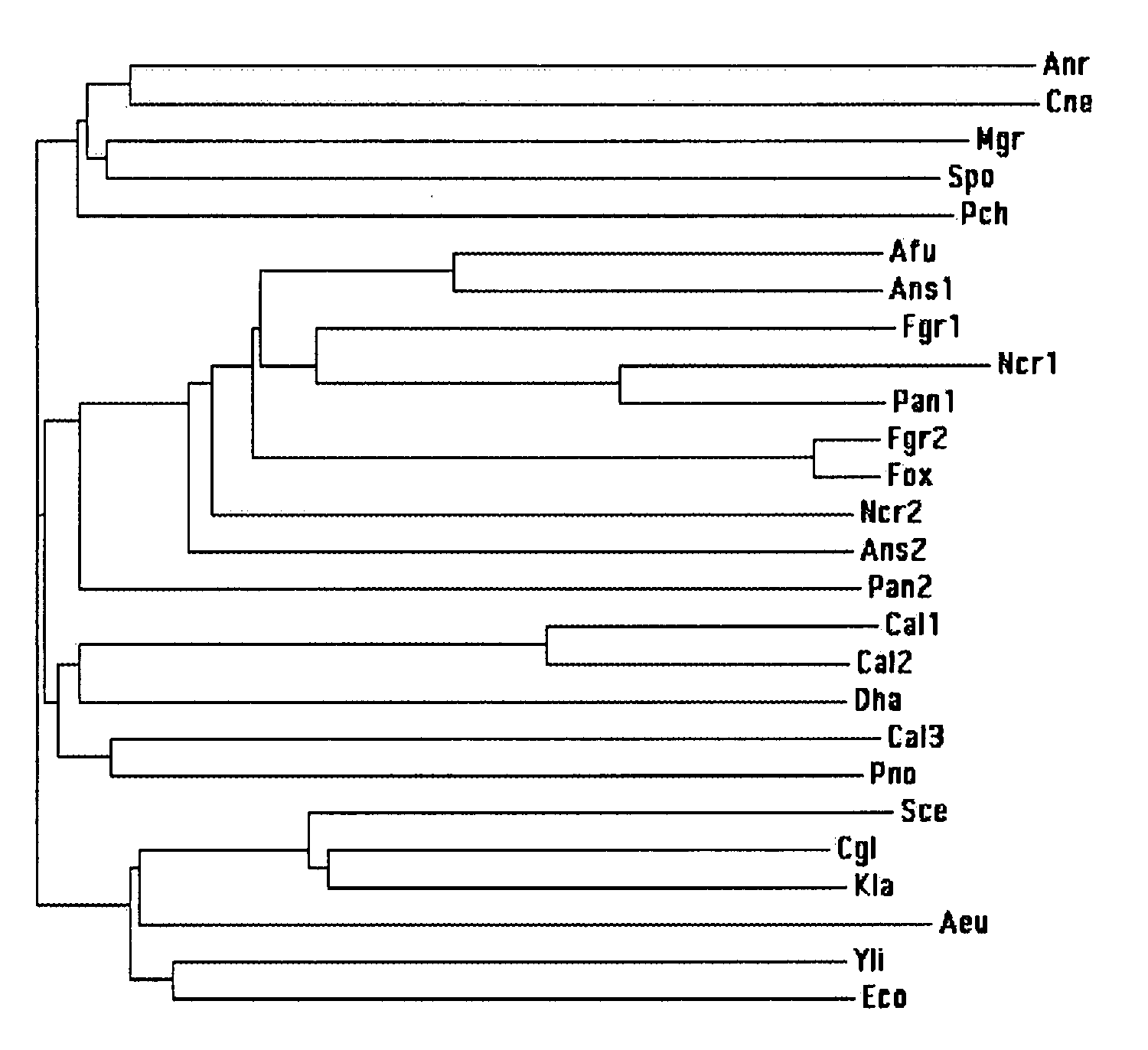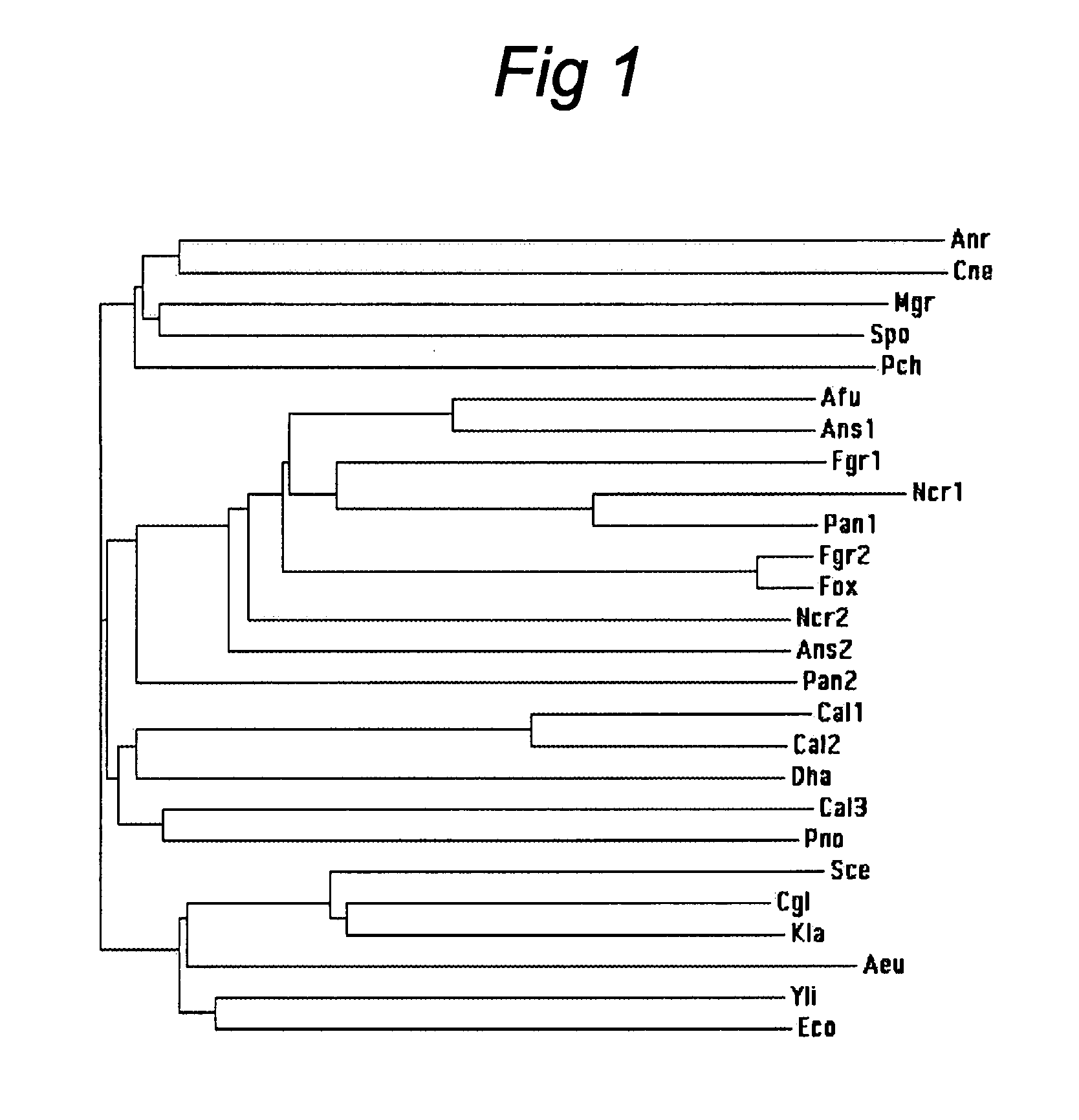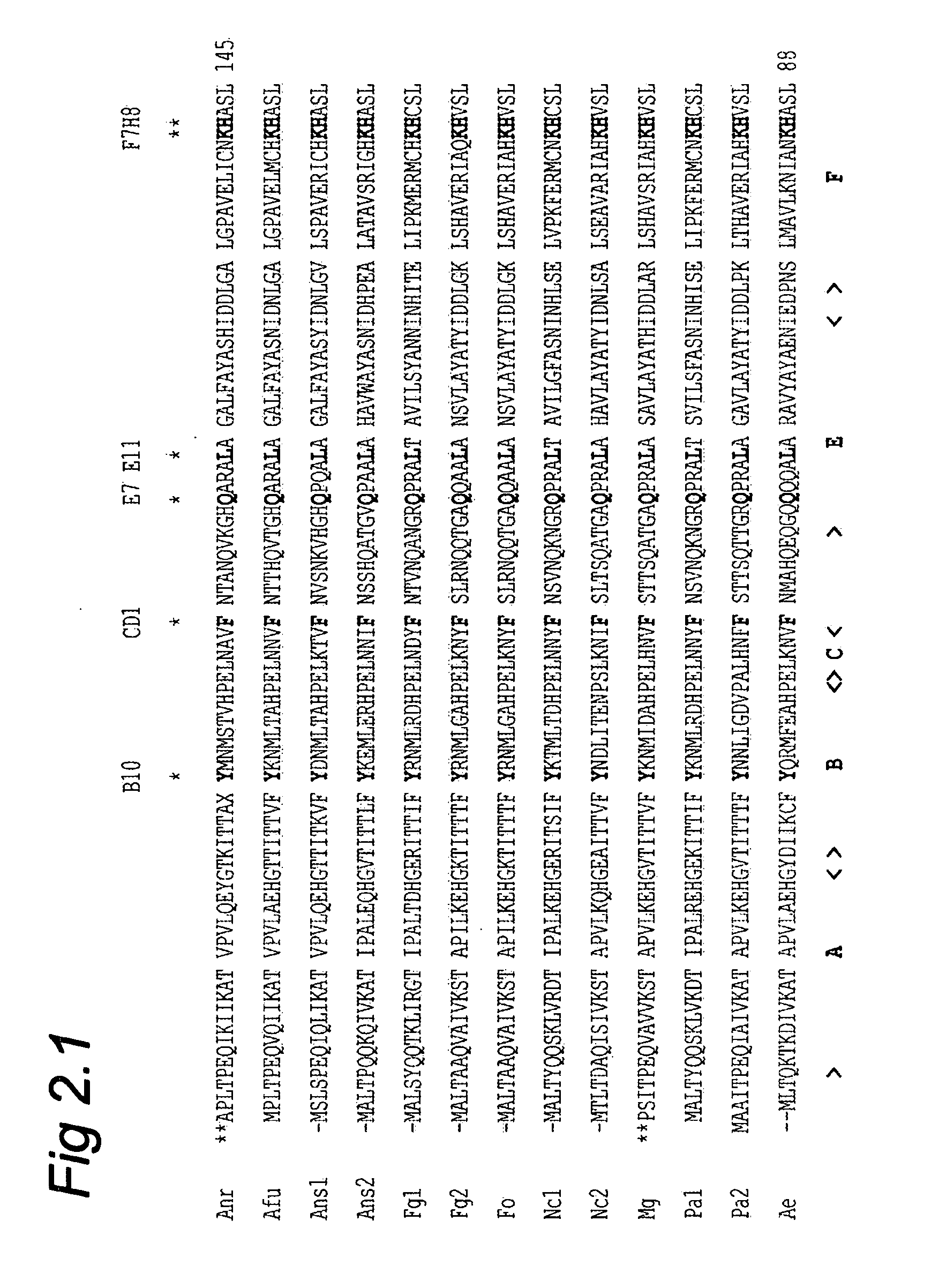Hemoglobin Overexpression in Fungal Fermentations
a technology of fungi and hemoglobin, which is applied in the field of fungi, can solve the problems that the flavohbs or the hemoglobin domain thereof have not yet been used for improving the fermentation properties, and achieve the effect of improving the fermentation properties
- Summary
- Abstract
- Description
- Claims
- Application Information
AI Technical Summary
Benefits of technology
Problems solved by technology
Method used
Image
Examples
example 1
1. Example 1
Isolation of the fhbA Gene of A. niger and Expression of the A. oryzae fhbA Gene During Polarized Growth
1.1 Materials and Methods
1.1.1 Strains and Media
[0067]A. oryzae ATCC16168 was used throughout this study and A. niger CBS120.49 was used to isolate the flavohemoglobin encoding gene. The pclA disrupted A. oryzae strains were constructed as described (WO 01 / 09352). Growth on wheat kernels, in 2% wheat based liquid medium (2% WLM) and growth on 2% wheat based solid medium (2% WSM) was performed as described (te Biesebeke et al., 2002; 2004). The transfer of fungal biomass to 2% WLM, 2% WSM or water agar medium (WAM) was performed as described (te Biesebeke et al., 2004). WAM was prepared by weighing 2 g bacterial agar (Difco) in 100 ml H2O that was sterilized by heating for 15 min to 120° C. and poured in sterile petri dishes. For surface growth on 2% WLM, 106 A. oryzae conidia / ml were inoculated in a 250 ml shake flask containing 100 ml 2% WLM and incubated without shak...
example 2
2. Example 2
Overproduction of Aspergillus Hemoglobin Domains in Aspergillus
2.1 Materials and Methods
[0082]2.1.1 Strains and media
[0083]A. oryzae ATCC16168 was used throughout this study. Growth on ground wheat kernels and 5% wheat based solid medium (5% WSM) was performed as described (te Biesebeke et al., 2002; 2004). Potato dextrose agar (Oxoid) (PDA) was prepared as described by the manufacturer. Complete medium (CM) consisted of 1% glucose, 0.1% Yeast extract, 0.1% casamino-acids, 0.2% peptone, 2 mM MgSO4, 10 mM NaNO3, spore elements. Minimal medium is CM without peptone, yeast extract and casamino-acids. For membrane cultures Nitrocellulose membranes (3 μm pore size, Millipore) that were placed on 25 ml of the agar-solidified substrates in petridishes innoculated with 2.5×107 spores as described (te Biesebeke et al., 2004).
2.1.2 Isolation of the Hemoglobin Domain Encoding DNA Fragments.
[0084]To amplify the DNA fragment (444 nucleotides) of the hemoglobin gene of A. niger, prim...
PUM
| Property | Measurement | Unit |
|---|---|---|
| Fraction | aaaaa | aaaaa |
| Fraction | aaaaa | aaaaa |
| Fraction | aaaaa | aaaaa |
Abstract
Description
Claims
Application Information
 Login to View More
Login to View More - R&D
- Intellectual Property
- Life Sciences
- Materials
- Tech Scout
- Unparalleled Data Quality
- Higher Quality Content
- 60% Fewer Hallucinations
Browse by: Latest US Patents, China's latest patents, Technical Efficacy Thesaurus, Application Domain, Technology Topic, Popular Technical Reports.
© 2025 PatSnap. All rights reserved.Legal|Privacy policy|Modern Slavery Act Transparency Statement|Sitemap|About US| Contact US: help@patsnap.com



